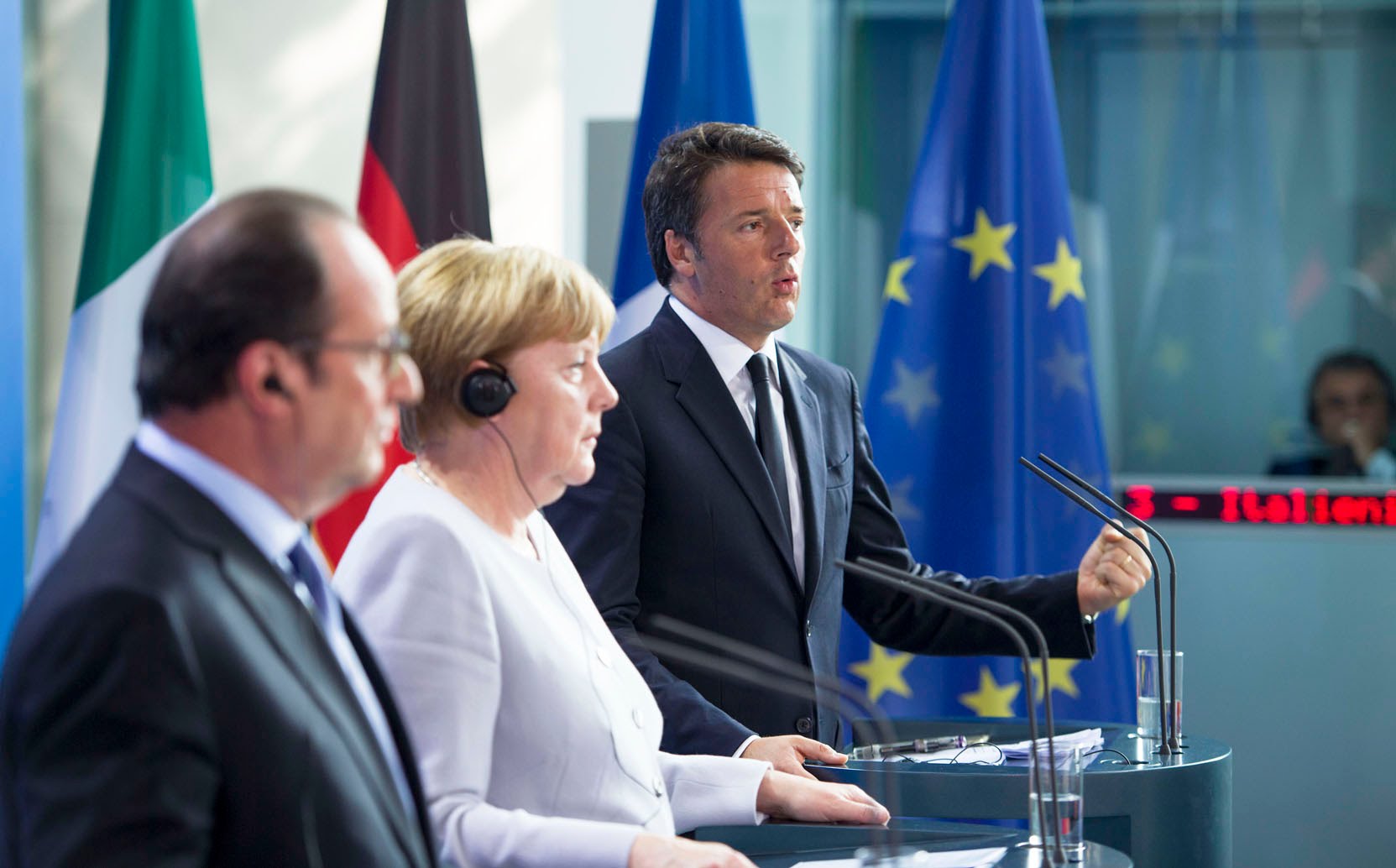Article originally published on Kurier.plus
Central Europe – With a little over two months left before the deadline for Brexit, Britons and their fellow Europeans still do not know on what conditions the UK will leave the EU, and even whether it will actually do so. The agreement announced last November between the British government and the European Commission had been approved by the European Council – that is, by the governments of all 27 countries that will remain in the bloc after Brexit – but it still required approval by the European Parliament and 28 national parliaments, including the British House of Commons, where it was rejected by the very large margin of 432 votes to 202 on January 15. Seen from the capitals of Central Europe, the best option would be for the UK to remain in the EU, as London is a strong ally in Brussels against plans for a two-speed Europe led by Germany and France and against moves towards a federal superstate. The new French–German treaty signed on January 22 in Aix-La-Chapelle by President Macron and Chancellor Merkel is yet another step in that direction, and without Britain Germany’s economic and political dominance in the EU is bound to become even greater. It is also already clear that those who believe in ever-greater integration of some EU countries around the Franco-German axis see Brexit as an opportunity. London has always been perceived as the main obstacle towards closer union. This makes the UK a natural ally for Central European countries, which have no wish to give up much of their hard-won sovereignty to Brussels’ institutions, but which also do not want to be left behind in a two-speed Europe. London and the Central European capitals have also often had common views on important questions decided at European level, such as free movement of goods and services, the need for a common energy policy to ensure energy security, and the importance of keeping NATO at the core of future European defence policies.
The second best option, from the point of view of Central Europe, would be if Jeremy Corbyn’s Labour had its way and the UK remained in a customs union with the EU. This would tie it to European rules, including free movement of persons. But this is one of the red lines Theresa May drew in her Lancaster House speech in January 2017, and after her January 15 defeat she repeated her commitment not to keep the country in a customs union, as this would be a betrayal of the people’s vote in the referendum of June 2016. The third best solution for Central Europe would be for the UK to leave the EU on the terms of the agreement announced last November, even if it were to be modified to remove the so-called Irish backstop, so as to increase May’s chances of pushing it through Parliament. According to this agreement, if the two sides cannot agree on a new trade deal by the end of 2020, then the UK will remain bound by the rules of the Common Market until both sides decide otherwise by mutual agreement. In the event of the UK leaving the European bloc, this solution would give the best possible guarantees for the economic interests of Central European countries, as well as for their citizens already living in the UK.
Unfortunately, neither of the scenarios described above (the second or third best) is very likely to come about, as they seem to lack majority support in the House of Commons. Both solutions would leave the United Kingdom permanently tied to the EU without having a voice in deciding its rules, and lacking the freedom to negotiate its own trade agreements with third countries. Moreover, in the case of the UK–EU deal agreed in November, the Irish backstop could lead Northern Ireland to have a special status within the UK and to be even more closely tied to the EU than the rest of the country. Based on past declarations from Nicola Sturgeon, the Scottish First Minister and leader of the Scottish National Party (SNP), there are good reasons to believe that Scotland might very well ask for a similar special status. The deal might therefore lead to some degree of de facto partition of the United Kingdom of Great Britain and Northern Ireland. By seeking Labour’s support, Theresa May could admittedly find a majority in favour of keeping the whole UK in a customs union on the Norwegian model, which the EU-27 would probably accept – but she would then have to cross a red line in a move she has consistently said would mean betraying the people’s vote, and this would certainly cause a permanent split within her own Conservative Party.
Besides the possibility of a second referendum, which could lead to the UK remaining in the EU after all, the most likely scenario is therefore the so-called ‘hard Brexit’ or ‘no-deal Brexit’, meaning a Brexit with no agreement. This means that the UK would leave the European Union on WTO terms. That scenario, which has become the default option under the EU Withdrawal Act after the rejection of May’s agreement with the EU-27, is no doubt the worst-case scenario for all sides, including the countries of the Visegrád Four (V4) and the Three Seas Initiative (3SI). If a hard Brexit happens, there will be consequences for trade, for European funds – as the UK’s pledge to pay up to €44 billion into the EU budget during the period to 2020 could be called into question – and possibly also for people from Central and Eastern Europe living and working in the UK, since any future British government would no longer be bound by Theresa May’s promises about their right to stay.
Why the worst-case scenario has become so likely is a question that the V4 capitals should be asking the European Commission and other European capitals, in particular Paris and Berlin, which are said to have exerted pressure on Brussels for the European negotiators to be uncompromising. It should be asked whether the EU conducted these negotiations with the goal of promoting “the general interest of the Union” and taking “the appropriate initiatives to that end” as Article 17 of the Treaty on European Union requires. Or perhaps these negotiations were conducted with other priorities, such as the need to deter other nations of the EU from choosing to leave the bloc by punishing Britons for their decision, notwithstanding the potential consequences of such an approach for the economies and citizens of the 27 remaining countries. Unfortunately, warnings against this kind of behaviour given by Central European leaders, including those of Poland and Hungary, have not been heeded. For example, when Polish foreign minister Jacek Czaputowicz was interviewed by The Telegraph during a visit to London last October, he underlined that “Brexit is a result of a sovereign decision of the British but also the wrong policies of the European Union and of deficiencies existing here in European institutions”, and added: “We are definitely against attempts to condemn or punish the British for their decisions. We see this attitude and it is not acceptable to us.” Also in mid-October, during an informal meeting between British Foreign Secretary Jeremy Hunt and representatives of the Visegrád countries, Hungarian foreign affairs minister Péter Szijjártó said that Central European countries expect the European Commission and other European institutions to make every effort to reach an agreement with the United Kingdom which could be considered fair by both sides. He pointed to British investment in Central Europe and the large number of Central Europeans studying and working in Britain as reasons why a fair agreement was necessary. As early as February 2017 the leader of Poland’s governing Law and Justice (PiS) party Jarosław Kaczyński vowed in an interview with The Telegraph to oppose those EU states that sought to punish Britain over Brexit. Hungarian PM Viktor Orbán also demanded last September that there should be a “fair Brexit” and that the UK should not be punished for the sovereign decision taken by its people.
However, if the Brexit negotiations are to be taken as an indicator of where the centre of power will lie in the future EU-27, they are a bad omen for Central European countries. In both the French and British media French president Emmanuel Macron has been said to be the main European leader behind the hard stance taken by the European Commission’s chief negotiator, Frenchman Michel Barnier, and also behind the stiffening of the EU27’s stance against Theresa May at the failed summit in Salzburg last September. As reported by the British press in the run-up to his election in May 2017, this “Europhile centrist has described Britain’s decision to leave the EU as a crime, saying he is attached to a strict approach to Brexit”. Macron has also publicly expressed several times his conviction that the 2016 referendum was manipulated with the use of fake news and that British voters chose Brexit because they had been lied to. “People were lied to and their choice is impossible to implement”, the French president said after the rejection of Theresa May’s deal on January 15. And Macron is now using this perceived failure of the Brexit process as an argument against the Citizens’ Initiative Referendum, demanded by the Yellow Vests movement that has been staging protests all over France since mid-November. Although German companies, especially motor manufacturers, could suffer heavy losses in the event of a hard Brexit, German chancellor Angela Merkel is also said to have been supportive of this hard stance, departing from her supposed usual pragmatism. When it became clear in early December that the agreement British PM Theresa May had brought back to London was unlikely to get the green light from the House of Commons, Merkel stated clearly that any change to that agreement would now be impossible. After its massive rejection by the Commons on January 15, the first reactions heard in Brussels suggested that the only sensible solution for the United Kingdom would now be to reverse the process of leaving the EU. For example, just after the Commons vote, European Council President Donald Tusk tweeted: “If a deal is impossible, and no one wants no deal, then who will finally have the courage to say what the only positive solution is?”
At the centre of the Brexit negotiations, the question of the return of a hard border between the Republic of Ireland and Northern Ireland was used from the very beginning to force Theresa May’s government into a deal which would keep the UK bound by EU rules. The Irish government and PM Leo Varadkar infuriated the British several times during the negotiations by pushing for a de facto partition of Northern Ireland from the rest of the UK, with Ulster remaining in the Common Market and Great Britain leaving it. Mr Varadkar went as far as to suggest that if Britain wanted to keep its fishing waters for itself it should not expect its passenger planes to be able to fly through Irish sky. After the November European summit, during which the EU-27 approved Theresa May’s deal on November 25, President Macron held a press conference at which he reassured French fishermen that the “backstop” contained in the agreement would be used in future trade negotiations to force the UK to keep its waters open. But it is Ireland that is most exposed to the devastating effect of a no-deal Brexit, which has now been made likely because of this inflexible and sometimes provocative stance. In early January 2019 the Irish government sounded the alarm bell by announcing it would have to seek hundreds of millions of euro in special aid from Brussels in the event of a hard Brexit.
The consequences of a no-deal Brexit for the V4 countries, for the EU-27 and for the United Kingdom itself are yet to be learnt. A report coordinated by Aston University and financed by the Visegrad Fund was published in February last year under the title “Brexit, Post-Brexit Europe and the V4”. It states that according to OECD figures for 2016 the UK accounted for 6.6% of Polish exports of goods, making it its second largest export market after Germany. Although not mentioned in the report, it should also be noted that farming products, which may be the hardest hit by a no-deal Brexit, account for over 15% of those exports. In terms of services, the UK is Poland’s second largest export market with a 7% share, and Poland has a trade surplus with the UK in both goods and services. The UK is also an important source of foreign investment in Poland, accounting for some 4–5% of the total. As far as the free movement of persons is concerned, although Poland’s political leaders will not say it aloud, they would probably welcome the closure of Britain’s border to immigration from Central Europe, as their country’s booming economy is suffering from a labour shortage and is having to resort to the use of immigrant workers, mainly from neighbouring Ukraine but also increasingly from non-European countries. However, even before the date of a possible Brexit the flow of emigration from Poland to the UK has already dried up. Since the 2016 Brexit referendum the number of Poles living in the UK has stabilized at around one million, making them the most numerous foreign nationality in that country.
Seen from Hungary, the UK is only the ninth largest export market for goods, accounting for less than 4% of total exports, and it is Hungary’s 14th largest source of imports. Like the other V4 countries, Hungary has a large surplus in its trade with the UK, particularly in goods. A no-deal Brexit could still damage some industries in which most of Hungary’s trade with the UK is concentrated. Around 100,000 Hungarian nationals live in the UK, and the closure of British borders to Hungarian immigrants would not be bad news for Hungary either, as that country is also suffering from a severe shortage of workers.
Prime Minister May’s “Plan B” laid before the Commons on January 21 is more or less the same as “Plan A” but with a “sunset clause” on the Northern Ireland backstop, meaning a hard date by which Ulster’s special status would end. A time-limited backstop enshrined in the Withdrawal Agreement could help Theresa May get the support of the 10 Irish Unionists from the DUP and a majority of Tory Brexiteers, as well as some Labour MPs, and so it would have a good chance of getting through Parliament. On the same day May presented her Plan B, Polish foreign minister Jacek Czaputowicz said in an interview that in order to avoid a no-deal Brexit the backstop could be limited to 5 years. Czaputowicz pointed out that although this outcome would not be ideal for the Republic of Ireland, it would still be much better than a Brexit on WTO terms. However this proposal was quickly rejected by his Irish counterpart Simon Coveney, who won the public backing of Germany’s foreign minister Heiko Maas.
Other plans were presented in the House of Commons on January 21. One would provide for the postponement of the March 29 date for Brexit and the ruling-out of a no-deal Brexit. Another one would be for Parliament to call a second referendum. Labour leader Jeremy Corbyn still wants to change the Withdrawal Agreement to secure a permanent customs union with the EU. If he cannot get the backing of a majority of MPs for his plan, he seems ready to back the call for a second referendum in order to avoid a hard Brexit.
A vote on Theresa May’s new proposal is planned for January 29. With the possible support of anti-Brexit Speaker John Bercow, other votes could take place in the Commons in the coming days and weeks on proposals aimed at enabling Parliament to act without the consent of the Government. Such an unprecedented move could in turn lead the Prime Minister to ask the Queen not to give royal assent to bills drawn up by backbenchers. That would be the first time a Monarch had blocked parliamentary legislation in over 300 years. According to some Brexiteers, another option would be for Theresa May to ask the Queen to suspend the parliamentary session until at least March 30 so that a no-deal Brexit could automatically take effect on March 29. But although Theresa May has refused to exclude a no-deal Brexit, she does not seem to be prepared for such an eventuality.
Whatever the eventual outcome of the Brexit process (no Brexit, the UK remaining in some sort of customs union with the EU, or Brexit on WTO terms), the very fact that this outcome remains unknown two months before the March 29 date is in itself very damaging for business and citizens. And this is Europe’s greatest failure.




